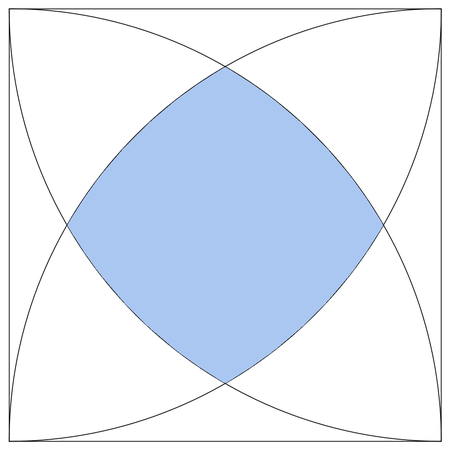I have this code that generates the image below, my question is how to calculate the area and perimeter of the first figure and all the variations of it considering a side of square "L" or as possible. The figure shows some variations, I imagine that MMA can find others. Help me with more code, still very new to MMA
pts = RandomReal[{0, 1}, {20000, 2}];
pts = Select[pts,
And @@ Table[
Norm[# - p] < 1, {p, {{0, 0}, {1, 0}, {1, 1}, {0, 1}}}] &];
Graphics[{Thick, Line[{{0, 0}, {1, 0}, {1, 1}, {0, 1}, {0, 0}}],
Circle[{0, 0}, 1, {0, Pi/2}], Circle[{1, 0}, 1, {Pi/2, Pi}],
Circle[{1, 1}, 1, {Pi, 3 Pi/2}], Circle[{0, 1}, 1, {3 Pi/2, 2 Pi}],
PointSize[Small], Point[pts]}]
EDIT : The idea is to have a variety of areas to calculate by hand after (they are challenges but I need to check them) Below were some that I had not noticed, that is the grace of MMA




